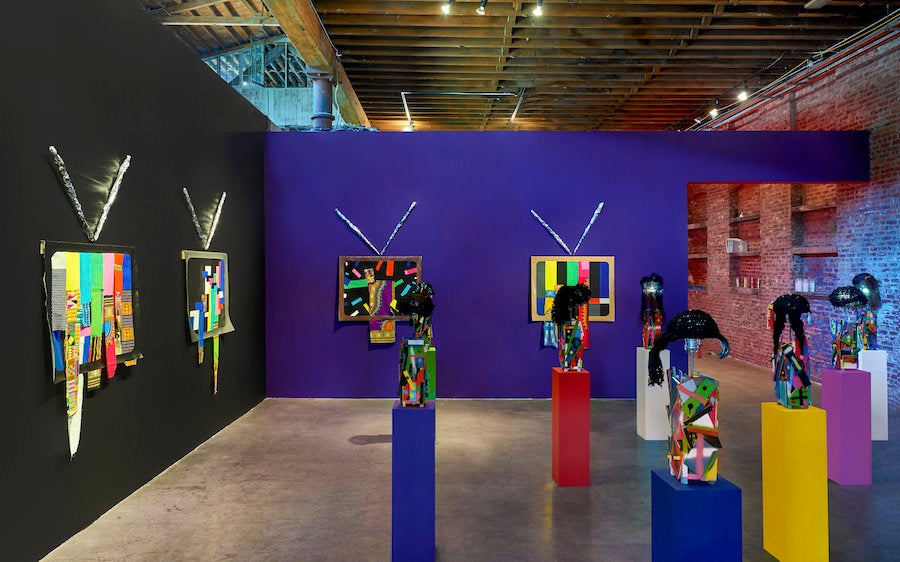Artist Derrick Adams is a bit freaked out about how so many homes are physically structured around a television set. "TV has become like an extra person in your house," he said in an interview with The Huffington Post. "Or rather, your TV becomes your leader."
Through his multidisciplinary practice, incorporating elements of painting, video, installation and performance, Brooklyn-based Adams explores the role television and media play in shaping contemporary culture. However, Adams' tone is far from one of judgmental alarm.
He's not calling for the death of television, that newfangled opiate of the masses. Rather, Adams likes TV; he watches TV and considers his work in conversation with it. His vibrant art mimics television's fast pace, its addictive visuals and exaggerated postures. Adams doesn't condemn the culture and cult of television, he simply explores it intensely and with critical fascination. "A lot of the things I make are about trying to connect the dots and figure out why and how am I who I am, based on media output and the things around me when I grew up," Adams said.
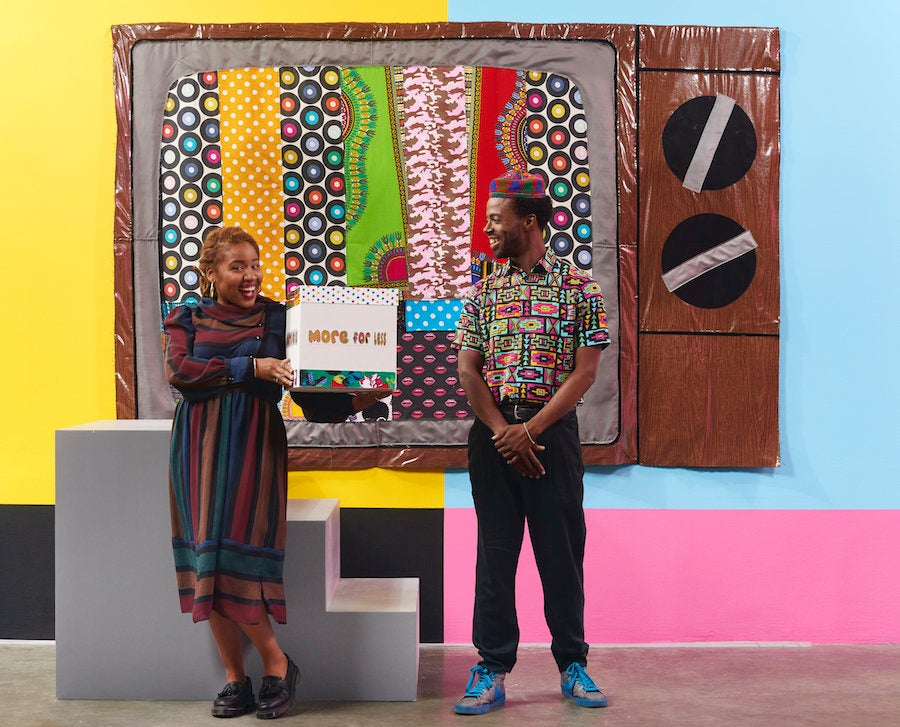
In his current exhibition "ON," now on view at Pioneer Works, Adams decked out the massive Brooklyn warehouse space with nine large-scale, mixed-media wall hangings. The sculptural objects resemble supersized old school television sets, with collaged fabrics covering the screen, recalling SMPTE color bars.
While many organize their living rooms around a television set, Adams takes the concept to surreal, exaggerated heights, mounting a rainbow temple honoring and challenging the ubiquitous media machine. The TVs' collaged insides are made from fabrics purchased on Bed-Stuy's Fulton Street, strips of African dashikis and mass-produced patterned textiles. Adams transforms the banality of the television set into something colossal, complex, all-consuming -- qualities television perhaps possessed all along.
"Even if you don’t watch TV, you are informed by other people around you who watch it," he said. "I see how things on television become structures for the way people live, the things people aspire to and desire, how religion does. It creates a desire and need and spirituality that is informed by consumerism. People feel at ease when they have a house that looks like a house on television, or when you get something from a commercial that you like and want. We can’t see a world without TV, there is no way. You have to embrace it and figure out how to navigate through it."
For Adams, the journey began in childhood, with shows like "Sesame Street," "The Muppets," "The Electric Company" and "Schoolhouse Rock." The structure of such television shows, the way they blurred the line between education and entertainment for children at such a young age, interests Adams. As he repeats throughout our conversation, "I'm not saying it's good, I'm not saying it's bad." It just is.
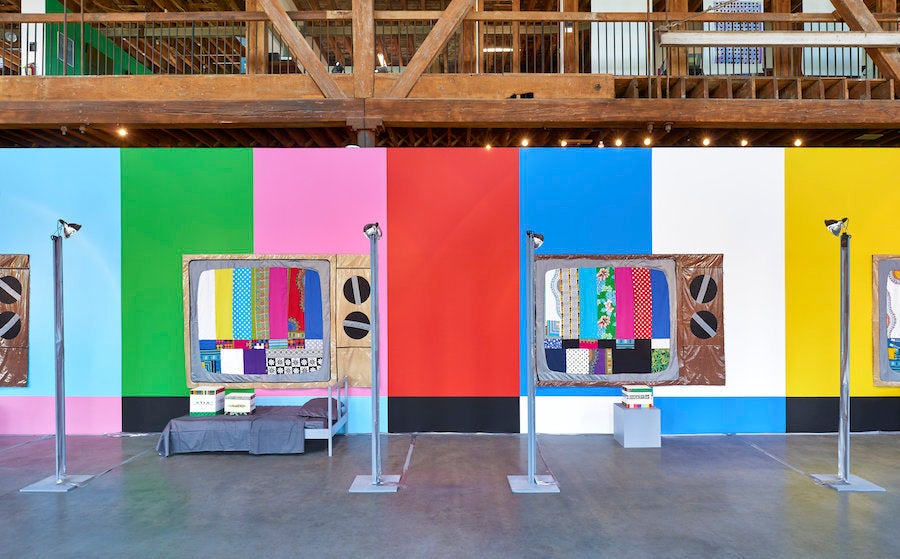
Another unique aspect of 1970s and '80s educational television programs is the fact that so many actors in the shows had rich roles, lives and passions outside of their characters. For example, Rita Moreno and Morgan Freeman both appeared on "The Electric Company," but were, at the same time, appearing in other movies and serving as sociopolitical activists outside of their roles. They publicly spoke about issues of race, gender and politics -- even when a camera wasn't rolling. "Nowadays TV allows you to perform politics without actually being outspoken about anything," Adams said.
"TV now allows performers to be radical, but their radicalism is only displayed in music videos. They never have to actually say anything outside of the script. I don’t think of this as a negative or positive, but it's an interesting shift," Adams added. "These older performers were outspoken activists who spoke publicly about human rights. Today you rarely see entertainers speaking publicly on issues unless it's done on a commercial."
Adams referenced a celebrity PSA calling for gun control that's been making the rounds online following the tragic Orlando shooting. In the heavily stylized video, short clips of celebrities in a studio are spliced together in black-and-white to create an author-less message. "How many more classrooms" asks Rashida Jones. "How many more movie theaters" chimes in Will Ferrell. "How many more houses of faith?" says Sarah Silverman.
"They’re speaking about politics in this extremely edited type of way," Adams said. "As an artist in this contemporary culture, I’m interested in adapting these tactics that have become so common in today’s culture. Media has such a big influence on the psyche of the citizens, you can’t reject TV. You have to negotiate with it, learn how to combine entertainment with learning. TV is a learning tool. I just want to redirect the conversation."
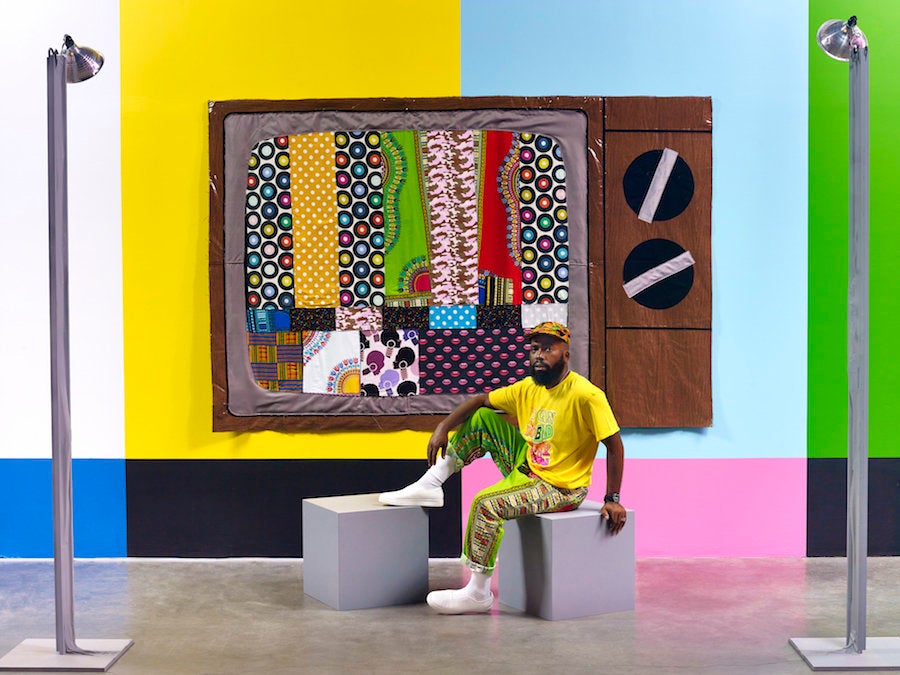
I ask Adams if he watches "UnREAL," the Lifetime drama that mimics the addictive entertaining aspects of reality TV shows like "The Bachelor" while critiquing their structures and delving into their sinister behind-the-scenes methodologies. To Adams, shows like this reveal TV's truly invincible powers. "You know TV is untouchable when it can make fun of itself without changing anything," he said. "When you get to be so structurally institutional, you can criticize yourself within the very formula you're criticizing."
Adams ultimately describes his personal relationship to television as a "love-hate" one. His favorite genre is science fiction, and he's often amused and frustrated by how much writers revert to racial stereotypes, past histories and tired generalizations in shows meant to depict the limitless future. "You think they'd be compelled to imagine the future world they want to live in, rather than reenforce media stereotypes. It's a futuristic show -- why are you talking about slavery? Use your imagination!"
He has similar complaints about "Game of Thrones," which, despite existing in a alternate universe, features only white people in positions of power. "None of the seven kingdoms are non-white," Adams said. "It’s supposed to be a fantastical, fairy tale story but it’s still borrowing from the same, preconceived racial dynamics that have informed all of Hollywood television."
And as for the black characters that do appear in mainstream television, they're often of a very particular disposition: loud, funny, exaggerated, over the top. According to Adams, such archetypal characters first appeared as minor roles in 1970s black comedies like "The Jeffersons," "All in the Family," and "Diff'rent Strokes." Roles like Arnold from "Diff'rent Strokes," known for his goofy temperament and knack for serving up catchphrases like "Whatcha talkin' bout Willis?" soon became the shows' unexpected stars.
When the next round of sitcoms came around, with '90s shows like "Martin," and "In Living Color," the networks put these hyperbolic caricatures of blackness in the starring roles. There's nothing wrong with featuring so many over-the-top personalities, Adams said, except that "for some people watching these shows, that’s the only representation of black people they have. These characters become representations of the black personality."
There are other common ways blackness is portrayed in mainstream media, all equally stereotypical. There's the old, wise, mystical, black woman -- a Miss Cleo type -- and her male counterpart -- think Morpheus of "The Matrix" or way too many of Morgan Freeman's roles. There's the sassy, Southern, black matriarch, like "Annie the Chicken Queen" who constantly appeared in Popeye's chicken commercials, described by radio station 104.7 as "a straight-talking, feisty Southern woman telling it like it is about her chicken."
In commercials such as these, Adams explained, blackness is being used as a commodity, a marketing technique to help push products. "It makes the chicken seem more authentic," he said. "Fried chicken is so racially and stereotypically connected to black culture, featuring a black woman makes the product seem more genuine or something."
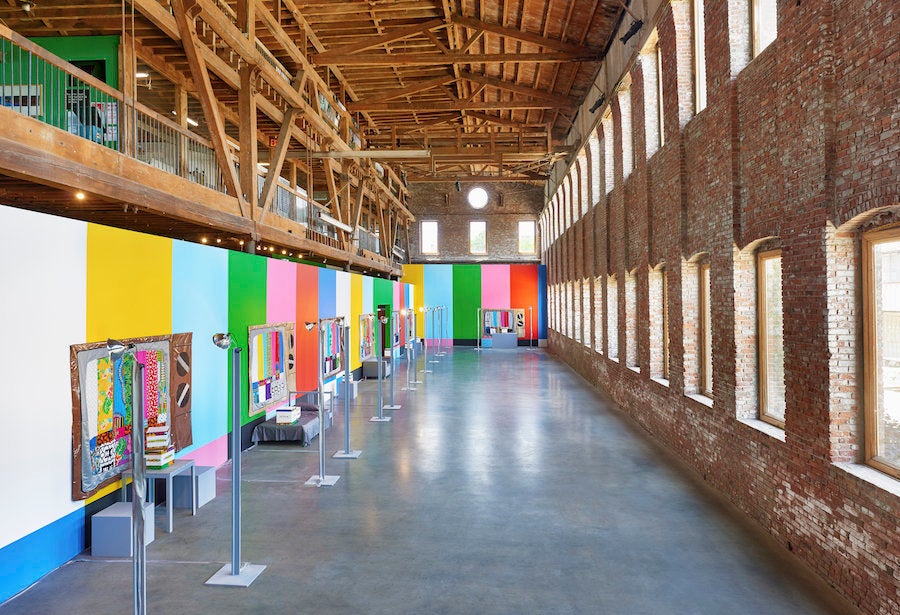
For a performance on the opening night of his exhibition, Adams wanted to allude to these performed notions of blackness while ensuring the piece had a sense of spontaneity lacking from most televised programs. He recruited performers using an open call, looking for black, outgoing, creative types -- but not actors -- to toy with the conventions of blackness on screen. He gave each participant a labelled box, with unknown contents, and gave them a single instruction: "Take the box and sell it."
The performers were guided to mimic black screen presences they grew up with and knew well, from George Foreman peddling his grill on an infomercial to Will Smith on "The Fresh Prince." The participants were instructed to sell their blackness to sell a product, using their funky style, uninhibited personalities and whatever black tropes they could muster up to their advantage. "Everyone was like, 'Oh I know how to do that!'" Adams said.
The result is a kaleidoscopic mishmash of exaggerated mainstream blackness, subverted and made strange by the intensity of the format. Imagine splicing together scenes from sitcoms and infomercials while watching them at twice their intended speed, in a giant rainbow space. "I wanted to show the media bombardment of black representation and black performative gestures and mannerisms all happening very quickly at the same time," Adams put it. "It becomes something fragmented, distorted, overly expressive, this bombarding form of personality."
Through "ON," Adams toys with the language of television, exaggerating the exaggerations, to reveal the stereotypes and structures we so often take for granted, and end up mistaking for reality. Adams works from the inside, using television's own language to point out the insidious ways media is carefully designed to shape our identities and desires.
Adams' work celebrates television more than it criticizes it, though, mostly because the artist comes from an undeniably positive point of view. "I'm not really interested in being negative," he said. "I like all these black figures who are over the top. I want to celebrate them." The celebration, however, comes with a caveat. "The people who are more critical of television and its structures are those who are constantly in contact with different types of people," he explained. "That’s the only way to break with the fantastical world of TV -- to come into contact with the people represented on TV in a real way. TV is just gonna be TV. It can't provide enlightenment when it comes to reality."
If grown viewers leave his exhibition looking at their television set with a more cautious eye, Adams will be pleased. It's also key that kids dig the art. "If a kid likes my show I feel that’s success," Adams said. He talks of the SMPTE color bars' resemblance to the color spectrums and grids often employed in elementary school classrooms.
The overlap of entertainment and education shapes children's minds from a young age. Perhaps, if art is in thrown into the mix, it can help give the almighty powers of television a run for its money. But even if the children just think the work looks cool, that's good too.
"Kids are the future," Adams concluded. "That’s what I think about when I’m making stuff, the future."
